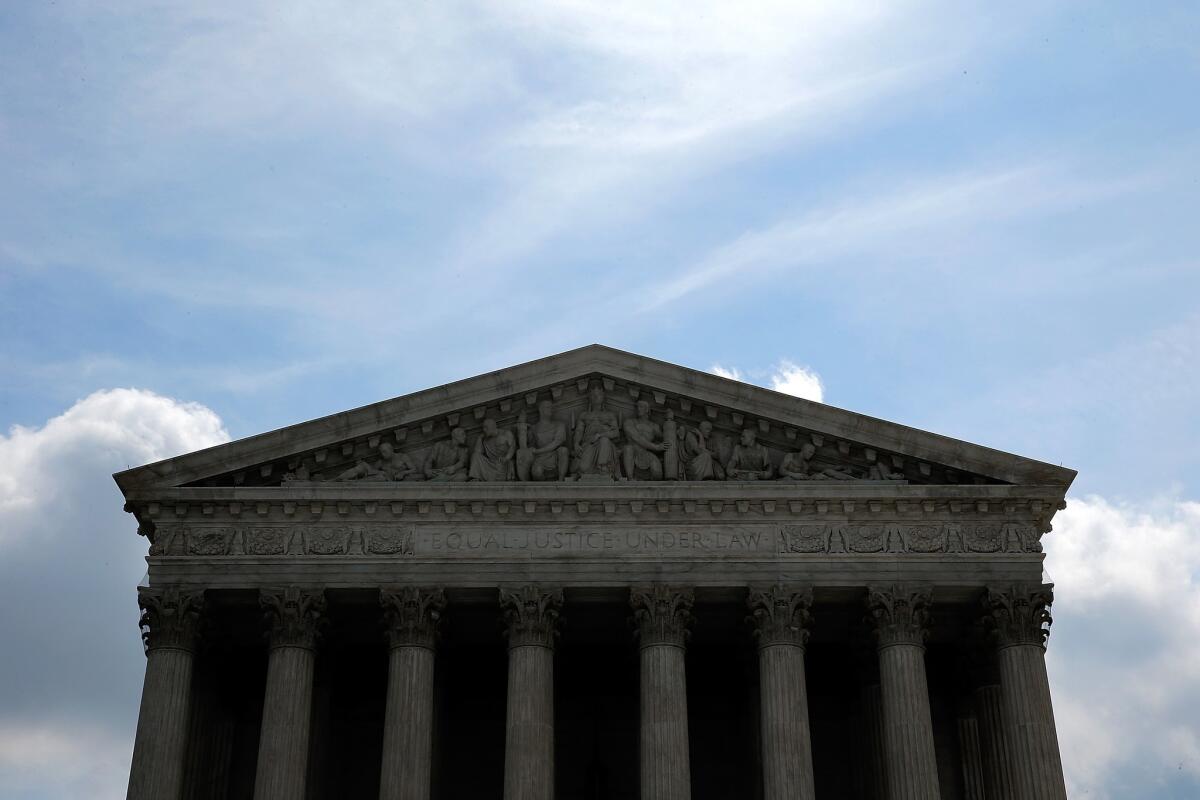Analysis: When unanimous Supreme Court rulings aren’t entirely unanimous

Over the last two weeks, the Supreme Court’s justices have unanimously agreed on 12 of the 16 decisions they have handed down.
At first glance, that seems a startling departure from the usual pattern, in which sharply divided Supreme Court decisions in late June are as predictable as heat and humidity in Washington.
But look more carefully, and it’s apparent that not all unanimous decisions are to be treated equally.
Sometimes, unanimous decisions stem from cases that truly seem easy: The justices agree that a lower court ruling was wrong, and obviously so, and its decision must be reversed.
One such ruling came this month. An appeals court in Atlanta ruled that a former Alabama college official had no free speech protection after he was fired in apparent retaliation for testifying about corruption. To no one’s surprise, the Supreme Court ruled unanimously to revive his free speech claim.
In other cases, however, the justices all agree one side deserves to win, but sharply disagree about what the law should be.
Thursday saw two such rulings. All nine justices agreed that President Obama went too far by appointing several people to senior federal positions when the Senate was on a brief break. They also all agreed that Massachusetts violated free speech rights by creating a 35-foot no-talking zone on public sidewalks outside abortion clinics.
But in both cases, the justices split, 5 to 4, on the underlying legal issues — whether presidents can ever make recess appointments and whether cities may generally enforce laws to shield abortion clinics from demonstrators who obstruct the sidewalk or harass patients.
The court’s majority answered both of those questions affirmatively, and the strongly worded opinions from the minority belied any suggestion that those were truly unanimous decisions.
“Unanimity can be exaggerated,” Washington attorney Paul Smith said. “On the ‘big’ cases, they are still often 5-4.”
Sometimes, the justices do issue unanimous decisions that make a major change in the law. Chief Justice John G. Roberts Jr. wrote one of those Wednesday — a strong, clear opinion in Riley vs. California that set aside decades of law that had allowed police to search any objects found on a person put under arrest.
Roberts ruled that those precedents could not be applied to cellphones. His message was that new technology had transformed how people live, and the law on personal privacy must be transformed as well.
Since he took office in 2005, the chief justice has tried to get his colleagues to avoid sharp 5-4 splits in major cases. When he started, he said that if necessary, he would prefer narrow rulings as a way to bring together a strong majority.
Sometimes, that has meant not going along with his conservative allies.
In the abortion clinic buffer zone case from Massachusetts, Justices Antonin Scalia, Anthony M. Kennedy, Clarence Thomas and Samuel A. Alito Jr. favored a sweeping ruling that would have knocked down local ordinances and state laws around the country that are used to restrict antiabortion protesters.
But Roberts would not go along. Instead, he joined the court’s four liberals — Justices Ruth Bader Ginsburg, Stephen G. Breyer, Sonia Sotomayor and Elena Kagan — in opting for a middle-ground approach that struck down the 35-foot buffer zone as “extreme” while endorsing other laws that would forbid obstructing clinics.
Scalia wrote a concurring opinion that read more like a dissent. The chief justice’s opinion “carries forward this court’s practice of giving abortion-rights advocates a pass when it comes to suppressing the free-speech rights of their opponents,” he began.
UC Irvine Law Dean Erwin Chemerinsky said narrow rulings explained many of the court’s unanimous decisions.
“The justices are not more in ideological agreement than in past years,” he said. “Scalia has not moved to the left, nor Ginsburg to the right. But in a surprising number of cases, they have found a narrow resolution where they can be unanimous.”
The recent outbreak of harmony may well end Monday, however.
The justices have two final cases to decide. One will determine whether Christian business owners may claim a religious exemption from providing contraceptive coverage for their employees. The other questions the long-standing rule that employees in public sector unions can be required to pay fees to the union.
Until this week, no one would predict those cases might yield unanimous rulings.
For more news of the Supreme Court, follow me on Twitter @DavidGSavage
More to Read
Start your day right
Sign up for Essential California for news, features and recommendations from the L.A. Times and beyond in your inbox six days a week.
You may occasionally receive promotional content from the Los Angeles Times.







